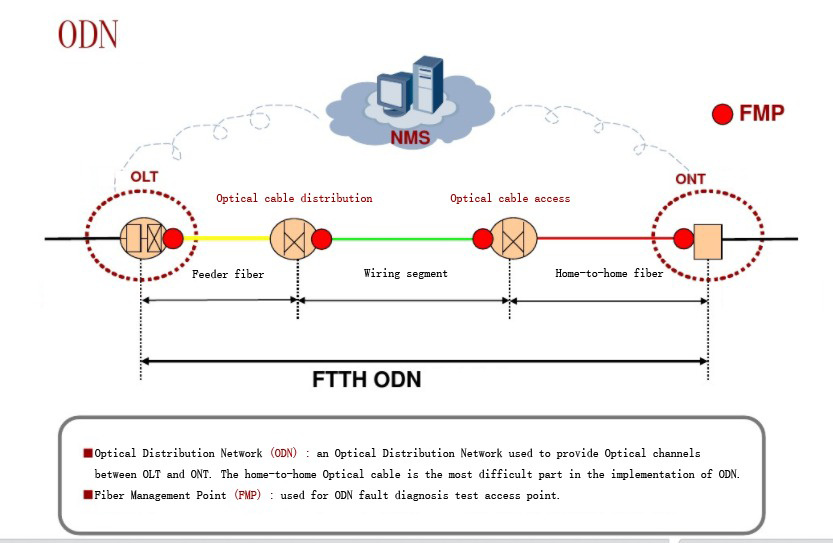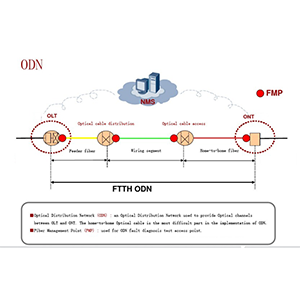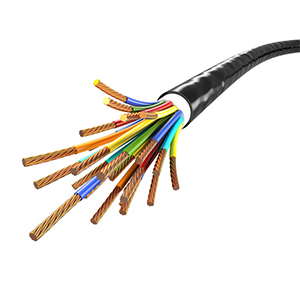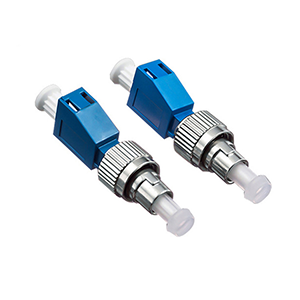Hello everyone! FTTH network is the leading technology in the current optical access field, and ODN, as the key physical transmission network, plays an indispensable role in ensuring high-speed and reliable fiber-to-the-home services. Today I am very happy to provide you with a comprehensive analysis of the important position and key technical features of ODN in FTTH networks, and to help you gain a deeper understanding of the key role of ODN in realizing optical fiber access. By understanding the advantages of ODN’s structure, transmission technology, etc., I believe you will be able to better plan and build your own FTTH network and provide users with an excellent optical access experience.

What is ODN
Let me give you an overview of ODN (Optical Distribution Network) technology:
Basic concepts of ODN:
- ODN is the optical distribution network part of the FTTH (Fiber To The Home) optical fiber access network.
- ODN is composed of passive optical components such as optical fibers and optical splitters (Optical Splitter). It is mainly responsible for distributing the optical signals of the OLT (Optical Line Terminal) to each user-side ONT (Optical Network Terminal).
- ODN provides reliable optical transmission channels and does not involve specific business processing functions.
The important position of ODN in FTTH network architecture:
ODN is located in the key transmission part of the FTTH network, connecting OLT and ONT.
The design and deployment of ODN directly determines the coverage and user access performance of the FTTH network.
- ODN is the basis for building a complete FTTH network topology and plays an indispensable role in the entire access network architecture.
The development history and application status of ODN technology:
- ODN technology continues to advance with the development of FTTH networks, gradually developing from the initial point-to-point optical fiber architecture.
- The current mainstream adoption is the Passive Optical Network (PON) architecture based on optical splitters.
- ODN technology has been widely used in FTTH network deployment worldwide and has become a key component of optical fiber access networks.
- With the continuous upgrading of PON standards (such as GPON, XGS-PON, etc.), ODN technology is also constantly optimized and innovated.
From the above, it is not difficult to see that ODN, as the optical distribution part of the FTTH network, plays an important supporting role in the entire access network architecture. Optimizing the design and deployment of ODN is crucial to improving the service quality and user experience of FTTH networks. As optical fiber access technology continues to advance, ODN technology will continue to innovate and develop.
The composition and functions of ODN
Let me introduce to you the composition and functions of ODN (Optical Distribution Network). If you want to learn more about the role of ONU and ODN in FTTH networks, please refer to the article: onu and odn: The Best Comprehensive Guide for Newbies
Main physical components and logical structure of ODN:
- Physical components include: optical fibers, optical splitters (Optical Splitter), optical connectors and other passive optical devices.
- The logical structure is divided into: trunk segment (Trunk), branch segment (Drop), user segment (Drop) and other parts.
- The trunk section is responsible for trunk optical signal transmission, the branch section implements optical signal distribution, and the user section is connected to the ONT.
ODN’s key technologies in optical signal transmission and distribution:
- Optical fiber transmission technology: ensures low attenuation transmission of optical signals on trunk lines.
- Optical splitter technology: realizes efficient distribution of optical signals and supports PON network topology.
- Optical connection technology: ensuring low insertion loss and high reliability of fiber optic connectors.
- These key technologies jointly support the optical transmission and distribution functions of ODN.
Main performance indicators of ODN and their impact on network quality:
- Optical power budget: determines the ODN coverage distance and branch capabilities.
- End-to-end loss: directly affects the bandwidth performance of user access.
- Reliability index: reflects the stability and maintenance cost of ODN.
- These performance parameters have an important impact on the overall quality and user experience of the FTTH network.
To sum up the above, ODN, as the optical distribution part in the FTTH network, is composed of a variety of passive optical devices and undertakes the basic tasks of optical signal transmission and distribution. The optimized design of various key ODN technologies and the stability of performance indicators directly determine the overall service quality of the FTTH network. ODN is an indispensable and important component of the FTTH network.
The role of ODN in FTTH network
Let me further introduce to you the important role of ODN (Optical Distribution Network) in FTTH (Fiber To The Home) fiber access network:
The key role of ODN in realizing optical fiber access:
- ODN, as the optical distribution part of the FTTH network, is responsible for transmitting and distributing the optical signals of the OLT (Optical Line Terminal) to each user-side ONT (Optical Network Terminal).
- ODN uses passive optical components such as optical fibers and optical splitters to build stable and reliable optical transmission channels, which is the key foundation for achieving the goal of “fiber to the home” for FTTH.
- The design and deployment of ODN directly determines the coverage and user access capabilities of the FTTH network.
The importance of ODN in supporting high-bandwidth services, remote power supply, etc.:
- The optical power budget of ODN determines the transmission distance and branch capabilities of the network, supporting the carrying of high-bandwidth applications.
- ODN can realize remote powering and provide power supply for user-side ONT equipment.
- These features enable ODN to effectively support the evolution of FTTH networks to high-speed broadband such as Gigabit and 10G.
The value of ODN in ensuring transmission reliability and improving user experience:
- ODN adopts passive optical device design, which has the advantages of high reliability and low power consumption.
- ODN’s low-loss design helps ensure bandwidth performance for user access.
- Stable and reliable ODN transmission channel provides a solid foundation for FTTH network.
- These beneficial features are ultimately reflected in providing users with an excellent business experience.
In general, ODN plays an indispensable and key role in FTTH networks. ODN provides important physical transmission support for the realization of “fiber to the home”, and also creates favorable conditions for the carriage of high-bandwidth applications and reliable services. The optimization and innovation of ODN technology is of great significance to promote the development of FTTH networks.
How to plan and deploy ODN
Let me introduce to you how to plan and deploy ODN (Optical Distribution Network):
Key factors and design principles of ODN network planning:
- User coverage requirements: Reasonably plan the ODN topology based on the user distribution in the target area.
- Transmission distance and branch capabilities: Optimize the optical power budget of ODN to meet coverage requirements.
- Economy and reliability: Find a balance between cost and performance indicators to ensure the long-term stability of ODN.
- Standardization and compatibility: Ensure technical compatibility between ODN and OLT, ONT and other equipment.
The main process of ODN deployment and issues that need attention:
- Reconnaissance and research: Conduct on-site research on the geographical environment and user distribution of the target area.
- Network planning: Develop detailed plans such as ODN topology and optical splitter layout based on preliminary research results.
- Project construction: Deploy optical fiber trunk lines, branch lines, optical connectors, etc. according to the design plan.
- Debugging and acceptance: Test optical power, attenuation and other indicators to ensure that the ODN can be properly interconnected with the entire FTTH network.
Best practices for ODN maintenance and optimization:
- Regular inspection: Regularly check the fiber connectors and connections at key points of the ODN.
- Performance monitoring: Continuously monitor key performance parameters such as optical power and transmission attenuation of ODN.
- Troubleshooting: Use tools such as optical time domain reflectometry to quickly locate ODN fault points.
- Optimization and upgrade: Dynamically adjust ODN topology and splitter configuration according to business needs.
Therefore, the planning and deployment of ODN need to fully consider user needs, transmission performance, economy and other factors, and strive to achieve a balance between cost and reliability. At the same time, the continuous maintenance and optimization of ODN is also critical, helping to ensure the stable and efficient operation of the FTTH network.
Summary
ODN, as the key physical network responsible for optical transmission and distribution tasks in FTTH networks, plays a vital role in ensuring high-quality optical fiber access services. Its rich physical component design, advanced optical transmission technology, and innovations in ensuring reliability and remote power supply all demonstrate the core position of ODN in FTTH networks.
With the continuous advancement of FTTH technology, ODN equipment and solutions will continue to be optimized and innovated, bringing more excellent optical access services to users. We provide professional ODN products and FTTH network planning services, and have an experienced technical team to provide you with considerate guidance at any time. If you have any needs during the construction and maintenance of FTTH network, please feel free to contact us for communication.
Optical Distribution Network FAQ
An Optical Distribution Network (ODN) refers to the passive infrastructure of fiber optic cables, splitters, connectors, and distribution points used to distribute optical signals from the central office (OLT) to subscriber premises (ONT/ONU) in a passive optical network (PON).
The key components of an ODN include fiber optic cables (single-mode or multimode), passive optical splitters/combiners (for splitting or combining optical signals), connectors (SC, LC, etc.), distribution boxes, and termination points.
An ODN facilitates optical signal distribution by using fiber optic cables to carry optical signals from the central office (OLT) to passive optical splitters, which then split the signals and distribute them to multiple subscriber premises via distribution points and termination points.
Some advantages of using an ODN include reduced signal loss, lower maintenance requirements (due to fewer active components), scalability for expanding network coverage, flexibility in deploying fiber optic services, and cost-effectiveness in long-term network operations.
An ODN can transmit various types of optical signals, including data, voice, video, internet, IPTV (Internet Protocol Television), and other multimedia services provided by telecommunications companies, internet service providers (ISPs), and network operators.
An ODN is deployed by laying fiber optic cables along designated routes from the central office (OLT) to distribution points, where passive optical splitters are installed to distribute optical signals to subscriber premises (ONT/ONU) through termination points.
Deployment considerations for an ODN include network planning, fiber optic cable routing, signal loss budgets, splitter/combiner placement, connector types, installation methods, environmental factors, and compliance with industry standards.
Yes, ODN design and deployment adhere to standards set by organizations like the International Telecommunication Union (ITU) and industry-specific standards bodies to ensure compatibility, reliability, performance, and safety of fiber optic networks.
In FTTH deployments, an ODN plays a crucial role in delivering high-speed broadband and multimedia services to residential customers by efficiently distributing optical signals from the central office (OLT) to subscriber premises (ONT/ONU) through passive optical splitters and distribution points.
ODN are commonly used in various applications, including fiber-to-the-home (FTTH), fiber-to-the-building (FTTB), fiber-to-the-premises (FTTP), enterprise networks, data centers, telecommunications infrastructure, and metropolitan area networks (MAN), to facilitate efficient optical signal distribution and connectivity.




